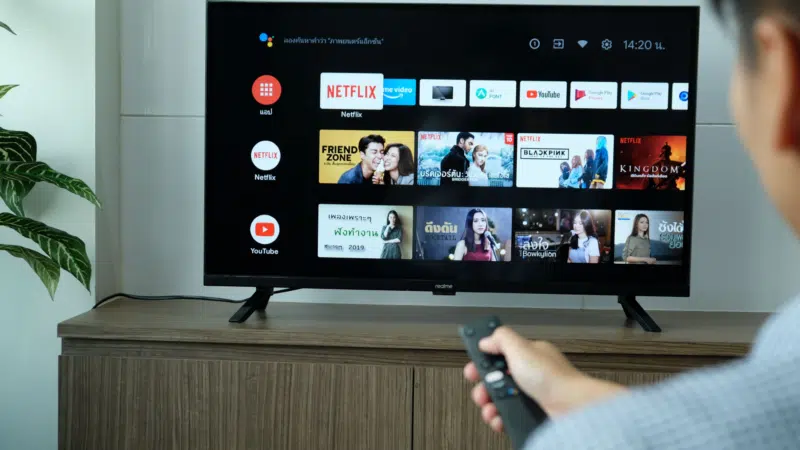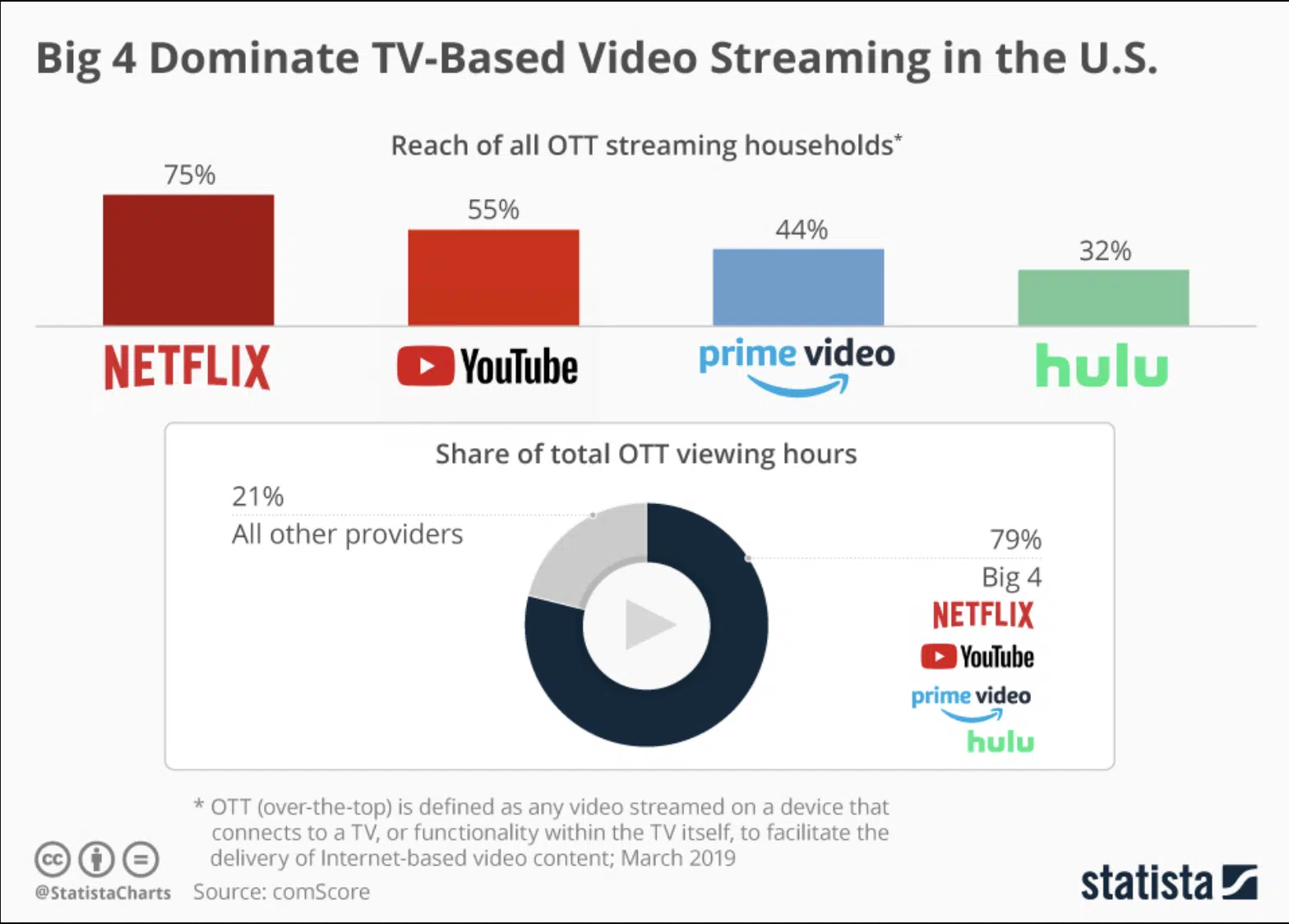How to set up and measure CTV ad campaigns
Learn how connected TV advertising works, steps for setting up campaigns and tips for measuring its effectiveness.
Connected TV (CTV) and over-the-top TV (OTT) advertising are powerful marketing tools for brands of sizes, with many advantages over traditional TV advertising. This guide covers everything you need to know about advertising on smart TVs — from how it works to the key considerations for advertisers.

Table of contents
The shifting trends in media consumption
Media consumption has altered drastically in the past few years. Streaming services proliferate, while cable subscriptions and satellite customers keep defecting and cutting the cord. The internet has irrevocably shifted the media landscape format with major implications for advertisers.
Dig deeper: Why we care about connected TV and OTT advertising
What’s the difference between CTV, OTT and linear TV?
The two primary differences here are the device used for streaming and how people watch the content delivered to that device.
CTV vs. OTT
CTV is delivered on large-screen devices, like the TV in the living room. It’s the biggest screen in the house and connects advertisers with multiple people simultaneously. It is delivered within streamed content through services like Netflix and Disney+. It can also be streamed through smart TVs, Blu-ray players and game consoles like PlayStation and Xbox (there were 1 billion in 2019).
It provides significantly better targeting capabilities than traditional TV, boosting efficiency and amplifying ROI. It’s also immensely popular, reaching 204.1 million worldwide viewers in 2022, according to Insider Intelligence.
OTT is delivered on smaller-screen devices, like tablets and smartphones. It connects advertisers with fewer people and is better suited for developing a 1:1 relationship. Both CTV and OTT can also include video-on-demand (VOD) services.
Linear TV
Linear TV is “traditional” television programming delivered by satellite or cable, generally only available on larger screens, whether in the living room, den or even a bedroom.
Programming is consumed linearly — meaning viewers watch episodes as they air and in the order they air. (This doesn’t account for cable/satellite services offering DVR functionality.) Linear TV can offer limited on-demand services, but not in the same way as CTV or OTT.
What are the benefits of CTV advertising
It’s more cost-effective than traditional options. CTV advertising ad impressions increased by 31% quarter over quarter in Q4 2020, according to Conviva’s State of Streaming report.
Dig deeper: 4 tips to get the most out of CTV advertising
It provides powerful targeting capabilities, improved engagement, increased reach and access to detailed campaign metrics to inform future advertising decisions. While cookies are going away, IP targeting is here to stay. Mobile phones can also be targeted; users often project video from their phones to a bigger screen.
It also offers:
- Cost savings via programmatic buying,
- High-quality delivery of visual ads.
- Enhanced opportunities for interactive campaigns.
- Performance measurement and optimization.
- Easy integration with new platforms.
Setting up a CTV campaign: A step-by-step process
Leveraging the benefits connected TV advertising offers isn’t rocket science, but it requires specific steps.
Step 1: Understand your target audience
CTV advertising lets you connect with almost any segment and helps you broaden your reach. Remember that these ads are usually displayed on the largest screen in the home, which often means presenting your campaigns to multiple people — parents and their children, for instance. So, in addition to understanding your target audience, you should consider how others will receive your ads within the viewing group.
Step 2: Define your goals
What do we want viewers to do after seeing the ad? Should they:
- Purchase a product or service?
- Learn more about your offering?
- Connect with your brand elsewhere?
How will that action funnel viewers toward the next touchpoint? What is the next touchpoint after that?
Successful CTV campaigns start with a plan based on clearly defined goals that matter to your success.
Step 3: Choose your platforms
The CTV ad marketplace works across streaming platforms. However, you’ll need to choose your platforms with care. Each one has a slightly different audience composition and membership numbers.
For instance, now that Netflix is showing ads on lower cost subscriptions, it offers a large and vert diverse audience. Apple TV, on the other hand, has a much smaller audience base, which is less diverse because it doesn’t have the same breadth of content as Netflix. Ask yourself a few questions here:
What type of content does my audience gravitate toward?
Netflix has something for everyone, but what about platforms like Discovery+? HBO Max could be well worth your time and money, but what about IMDB or Tubi? With the proliferation of streamers, advertisers must dig deep and do their due diligence on each potential platform to make informed decisions.
How does the platform handle ads?
Each streamer seems to take a different path here. For example, Hulu places ads strategically throughout streamed content. Peacock has a different viewership strategy and puts all the ads at the very beginning. Consequently, ad placement/timing affects audience retention. The real-time auctions can be slightly different, provider to provider. Each platform’s definition of video completion rate might differ.
Based on your answers to these two questions, you can move on to the next step: creating effective video campaigns.

At my agency, we also like to use keywords for targeting. This helps us find buyer intent signals which are great identifiers of penetration opportunities in the marketplace. Doing so gives more relevance to the personas we pursue and complement other targeting layered in to create the most responsive campaign possible.
Step 4: Create effective video campaigns
You’re putting an ad in a place where premium content is broadcast. Your content has to match that quality. Today’s sophisticated audiences expect company-produced content to be polished and professional. That means doing more than using high-end equipment and working with the right individuals from ideation through production and delivery.
Various ad formats will be essential to help capture different types of screen sizes but making a storytelling video that’s “ready for primetime” is probably your biggest hurdle.
How to measure CTV effectiveness
Some of the primary KPIs to include in your dashboard are:
Reach
Reach shows how many people have seen your ad and helps you understand visibility and campaign exposure. To determine this, divide the number of unique viewers by the total number of viewers. Your reach is also tethered to inventory (i.e., how big of a stake you buy in any one package).
Impressions
This is the number of times your ad has been viewed overall and does not account for unique viewers. It can help you determine how often to show your ad and understand overall exposure. Determining impressions is simple — add up the number of times the ad has been shown.
Viewability
Viewability refers to whether a viewer saw the ad. This factors into campaign success because if the ad is displayed but not seen, it cannot build awareness or create conversions. Viewability is determined by dividing the number of viewable impressions by the total number of impressions.
ROI
Calculating return on investment can be tough, but it’s important for determining the overall success of your CTV ad campaign. You can track viewer conversion rate or track brand awareness or purchase intent.
Completion rate/viewer engagement
Completion rate speaks to viewer engagement and it’s just a measure of how many people watched your ad all the way through. A high completion rate may indicate that people are engaged with your ad. However, some platforms don’t broadcast skippable ads, which can skew your results. With some pre-roll, you can sometimes match YouTube’s policy and not pay if someone skips before five seconds.
Frequency
If your ad is shown to the same people too many times within a short time, it can lead to fatigue. However, it can also be a good tactic for building brand awareness. Shoot for balance here and use a measurement tool that tracks the number of times each viewer has seen your ad.
Conversion rate
Conversion is the Holy Grail of all advertising, not just connected TV advertising. It’s also one of the most critical metrics for determining campaign success. Make sure to define what counts as a “conversion” before your campaign goes live, whether that’s a website visit, purchase or something else.
A note on metrics
It’s not always as simple as “video clicks” because CTV ads will likely produce more view-through than first-time click-through conversions. Remember, we’re at the top of the funnel! Give your audience time to absorb and catch up with your brand across all your placements.
Dig deeper: How CTV can deliver market research for B2B marketers
View-throughs take place as late as 30-60 days for some consumer products and services. This means the content worked, but they weren’t ready to take action when the video played. Meanwhile, we’ve gotten 3-5% CTR on mobile devices streaming a very high-end TV spot we produced.
Your advertising metrics can create audience segments and guide your campaign’s performance. This also allows for clear attribution and precision since you will have tons of data to sort through. The more organized you are upfront, the better.
Moving your advertising game forward with CTV
CTV advertising looks to continue as more and more people shift away from cable and satellite to streaming platforms. However, not all platforms are created equal.
Advertisers should dig deep to determine which streamers best suit their connected TV efforts. They should then create evocative ad campaigns based on actionable, meaningful goals supported by KPIs to measure progress and success.
Opinions expressed in this article are those of the guest author and not necessarily MarTech. Staff authors are listed here.
Related stories